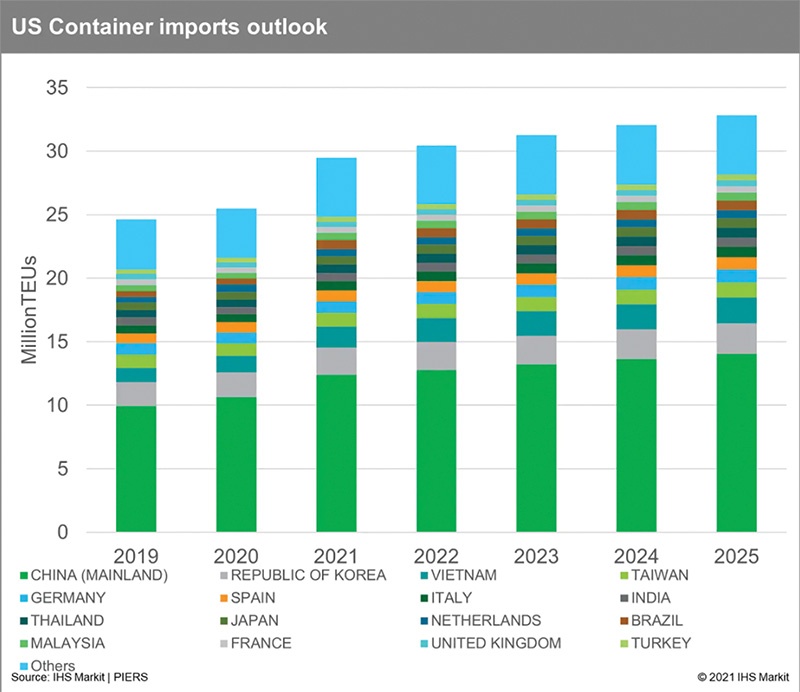Local group takes container matter into own hands
 |
| Local group takes container matter into own hands |
Three months since officially starting construction, the Hoa Phat container factory announced that it expects to start supplying container products from Q4 with a capacity of 500,000TEUs of container per year, using Hoa Phat’s own steel.
Hoa Phat is now the first official container producer in Vietnam. It aims to complete the factory as quickly as possible in order to take advantage of market opportunities due to the serious shortage of empty containers shipped from abroad to Vietnam and at the same time contribute to promoting the export of goods and global trade.
According to industrial insiders, a container business must have a certain and regular commitment order, while production requires a large amount of capital to invest in factories, machinery, raw materials, and labour.
Meanwhile, Vietnamese enterprises in this field are currently small-scale and do not have the capital to invest far enough in expanding production, so they have to accept the renovation and repair of containers and production of more mechanical products, such as trailers and semi-trailers, to survive.
Meanwhile, raw materials for the production of shipping containers include hot rolled coil steel and special grade SPA-H. Hoa Phat Dung Quat Steel Integrated Complex already produces these and, in Vietnam, only the Hoa Phat Dung Quat Complex has the technology to do so, according to the group.
“Hoa Phat Group has advantages of big-scale production and being active in material resources as well as experience in manufacturing. These factors have ensured high quality and reasonable prices for its cargo containers to compete with Chinese products,” said Vu Duc Sinh, director of the Hoa Phat Container Manufacturing JSC.
Almost every container shipped by sea is mainly built by three big companies in China (CIMC, Dong Fang, and CXIC) with a ratio of more than 96 per cent of dry cargo containers and 100 per cent of cold containers worldwide. These big firms are expected to make more than double the new containers in comparison with their pre-pandemic output.
Triton International, the world’s largest lessor of intermodal containers and equipment, predicted that the impact of the pandemic will also continue to affect the overall market, prolonging supply chain disruption and creating additional demand for containers, although this year could see a return to normalcy in container availability after the shortages.
Brian Sondey, CEO of Triton International said, “A shortage of vessel capacity drove exceptionally high freight rates, keeping customers focused on container availability. And container manufacturers had a hard time catching up to demand despite a large increase in production volumes, leading to record prices for new and used containers and very high market leasing rates.”
He added that, over time, it is likely that container supply and demand will remain tightly balanced because of the ability of the manufacturers to flex their production up and down.
“It’s going to be interesting to see what happens as the bottleneck soothes this year and some container capacity becomes available. But overall we see a pretty good picture for the next couple of years for containers in terms of supply and demand,” he added.
What the stars mean:
★ Poor ★ ★ Promising ★★★ Good ★★★★ Very good ★★★★★ Exceptional
Related Contents
Latest News
More News
- Can Tho utilises its growth advantages (December 15, 2025 | 09:09)
- Ca Mau unlocking potential to shape a more sustainable future (December 15, 2025 | 09:02)
- MoF workshop highlights mounting concerns over ODA on-lending costs (December 12, 2025 | 16:05)
- National Assembly approves pilot mechanisms to accelerate major projects in Hanoi (December 12, 2025 | 11:29)
- Legislation gives government flexibility for loan guarantees (December 11, 2025 | 18:04)
- Vietnam eases policy approval requirements, simplifies foreign and outbound investments (December 11, 2025 | 17:53)
- Vietnam masters core technologies of automobile value chain (December 11, 2025 | 17:46)
- VAL opens second line of largest soybean crushing complex in Southeast Asia (December 11, 2025 | 12:08)
- Vietnam urged to shore up supply-chain resilience amid global uncertainty (December 10, 2025 | 18:47)
- Unpacking new momentum in Vietnam’s M&A market (December 10, 2025 | 09:59)

 Tag:
Tag:






















 Mobile Version
Mobile Version